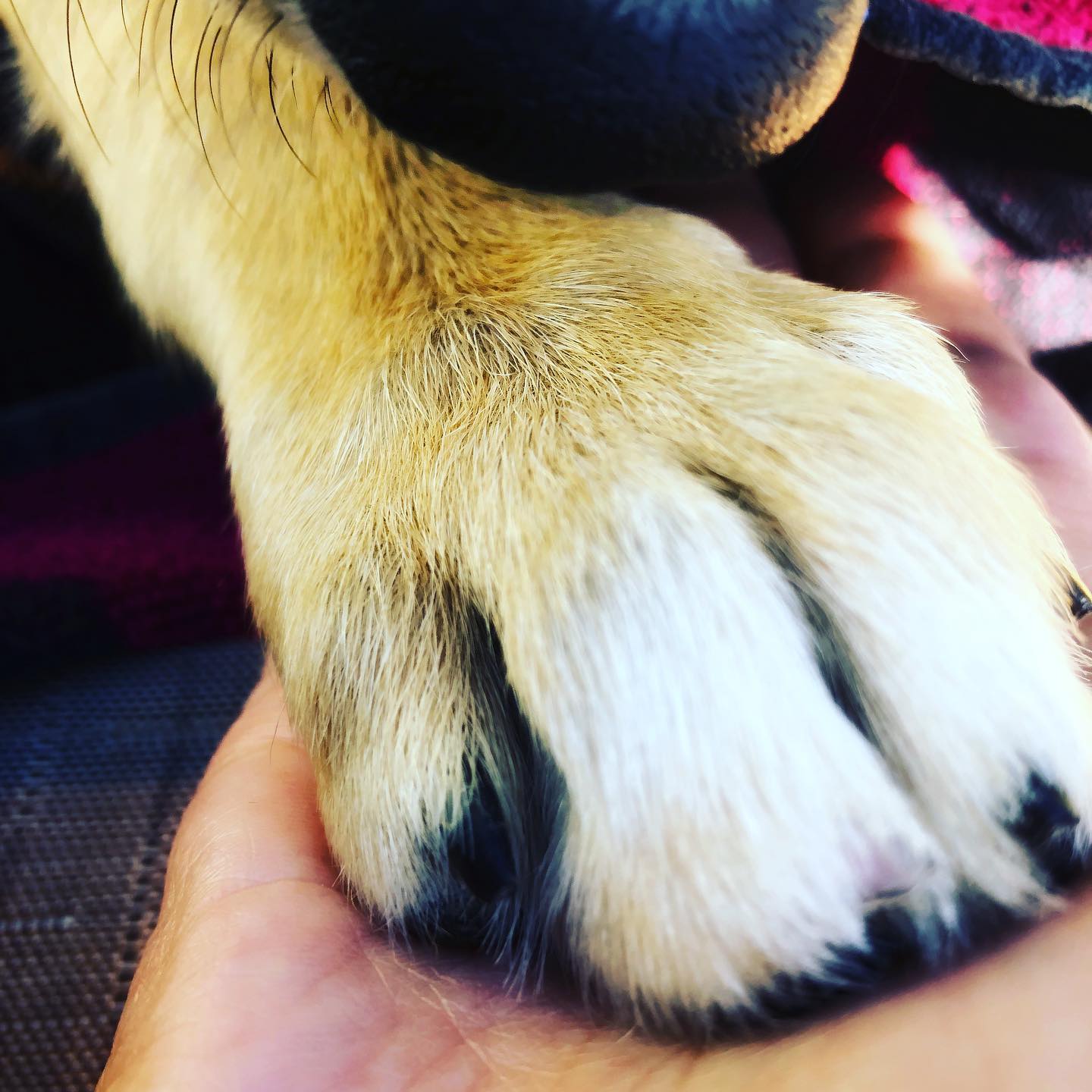
Way back at the beginning of our podcasting journey (which started in 2005) Jeannie and I had a guest on who taught Reflexology for dogs which we titled Paw Points. I’d share that 2006 episode with you but the recording isn’t great. Also, sadly, this wonderful woman, Sue Stackhouse, doesn’t seem to be online doing this any longer although she may still be doing so in her local area. Sue was a really nice person and we enjoyed our time on the show with her and stayed in touch with her for a few years afterward.
The graphic I’m sharing here is by Healthy Thymes (they focus on YL essential oils) and they use the term Vitaflex which is a term by YL founder Gary Young. It’s based on the same thing as Reflexology but it incorporates the use of the YL essential oils.
However, I’d make sure to use jurisprudence in using essential oils on the paw pads, and definitely not undiluted. I’m not a huge fan of using oils there but I do like doing the reflexology on my my American Bully King. My Carolina Dog, Ezra is just now starting to let me hold his feet and even rub them a bit. He’s been very sensitive about that since we got him nearly two years ago. Most dogs are but with patience it usually doesn’t take long before they are enjoying the massage and even the reflexology. With Ezra though, that’s not the case. He does like massage though on his body. So that’s a step in the right direction. Yes, nail trims can be very challenging with him but we’re staying the course. Now back to the Vitaflex (remember reflexology with oils)…

IF I were going to use the oils in this fashion on my dogs, I personally would put a drop of oil in my hand, rub my hands together, and simply smell the oils. What? Yep, THEN I’d apply to my dog. The oils have essentially gone into your body, and what is left on your hands are the vibrational frequencies. Don’t think that’s weird, do some research into that. Frequencies are all around us, IF we’re alive that is! In plants, the ground, water, air, spoken words, music, etc. In the movie Frankenstein when the crazy doctor zapped the monster with electricity and it woke up, the doctor shouts, “It’s ALIVE, It’s ALIVE!” LOL. We are electrical beings = frequencies. So the oils will still benefit your dog this way and I believe even better since they’ll only be receiving the beneficial frequencies. Then you can go ahead and do the reflexology if you desire. Very gently at first since dogs are still rather particular about their feet. My boy King likes having his feet massaged as I said but I took my time accustoming him to it. I don’t use heavy pressure.
With my dogs when I use the oils, I mostly just put the oils in my hands, rub them together, then pet my dogs rather than put them on their feet/paws. Also remember dogs have very sensitive sense of smell so diluted is best.
You know your own dog best so again use your best judgment. If you aren’t sure, then be sure to get guidance. Canine massage therapists can be very helpful. I was able to do more with my giant breed dogs than the two I have now. They seemed to be less sensitive than these two I have now. So treat them as the individual they each are.
I’m using caution here because I’ve seen people do some weird things with their animals. I’ve found with my own dogs, less is more. I do use the oils on them but usually one drop at a time and I just never put them on their paws. Look up information on Reflexology – you’ll most likely only find information on human health but it can help you better understand this. I did it on myself for a while when I was learning this in school. Something new to learn!
Until next time…
Have a PAWSitively, tail waggin’, NATUROPATHICALLY healthy day!

Kim Bloomer, V.N.D., N.D. is an animal naturopath as well as being certified in small animal nutrition, with years of experience in animal wellness. Dr. Kim is a published author, writer, and blogger. Subscribe to her DOGgone Newsletter for updates or to her blog via email. Copyright ©2005-2025 Aspenbloom Pet Care, Dr. Kim Bloomer, All rights reserved. No part of this article may be reproduced in any form without the written consent of the Author/Publisher. This article is intended to be educational. However, it is not intended to be a substitute for diagnosis or treatment from a qualified animal health professional. Dr. Kim Bloomer and Aspenbloom Pet Care, do not assume any legal responsibility for misuse of the products discussed in this article. The only essential oils referenced on this website are Young Living.



